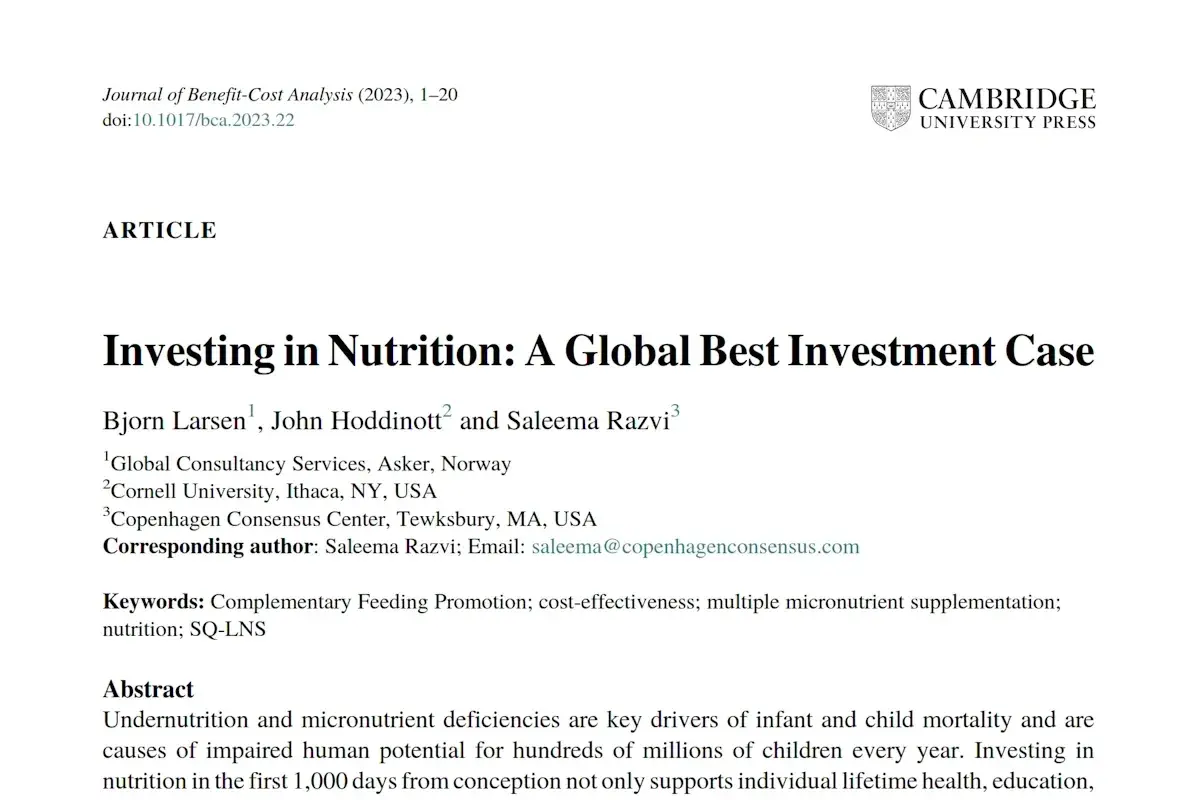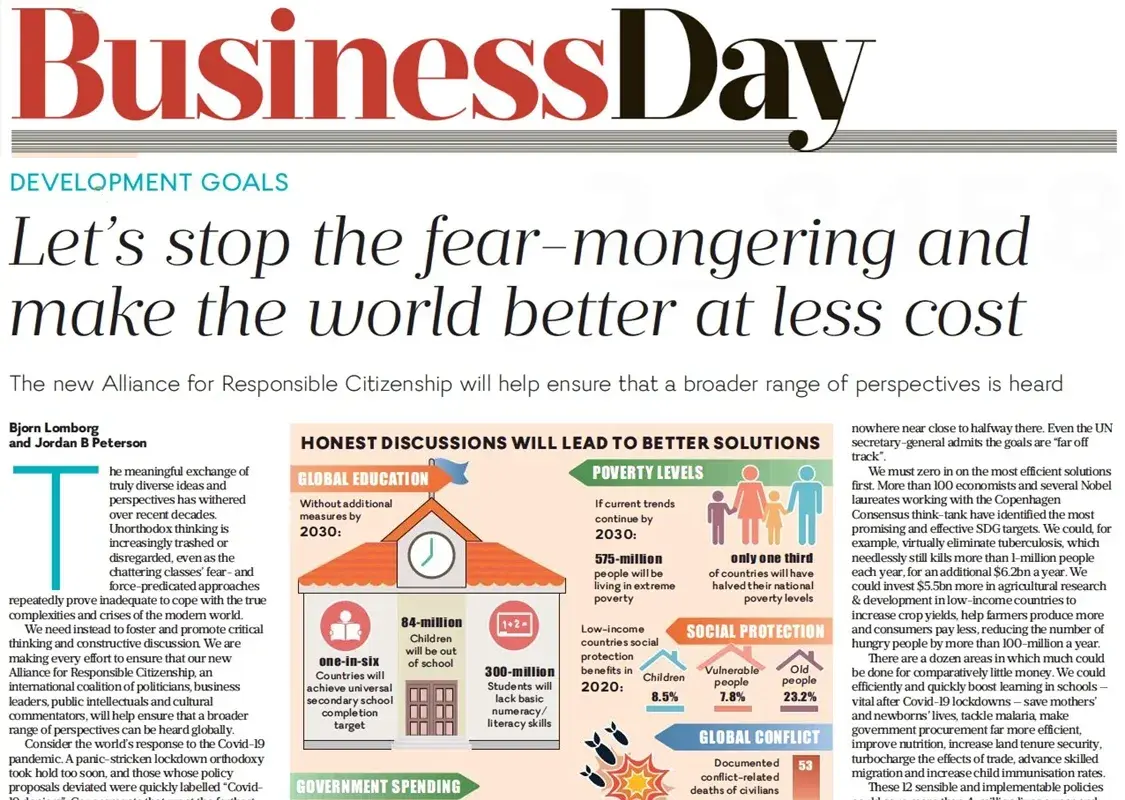Nutrition
Lifetime benefits of micronutrients in pregnancy
Of all the Sustainable Development Goals (SDG) that the world is on-track to fail to achieve by 2030—and there are many—perhaps the most tragic and infuriating failure is the lack of progress on ending global malnutrition and hunger.
This failure is particularly tragic because unlike some of the goals that are loftily ambitious―like ending poverty or getting every person in the world into a job―ending malnutrition should have been within our grasp.
After all, today’s richest countries effectively ended chronic malnutrition in the 20th century. Japan had six-in-ten children undernourished in 1900 but reached very low levels by the year 2000. China achieved massive drops in malnutrition in the last 20 years, while other developing countries―including India, Ethiopia and the Philippines―have cut rates dramatically; however, persistent pockets remain: in the poorest and most fragile countries, malnutrition hasn’t been decreasing at all. Nations like Burundi are simply stuck at very high levels.
Our failure can be measured in stark terms and in two figures: 25 million children will be stunted this year, meaning they are so chronically underfed that they are shorter than their peers of the same age. Further, because being stunted is corelated to fewer opportunities over an entire lifespan, the global cost of under-nutrition every year is US$ 1 trillion.
It was in 2015 that the governments of the world promised to end stunting by 2030, along with a long list of other SDG promises. We are at halftime but far from halfway. Based on trends before COVID-19, we will only achieve the goal in the year 2116, 86 years after the target year of 2030.
This global failure is what has driven my think tank, the Copenhagen Consensus Center, to work with some of the world’s best economists to identify which SDG promises should be prioritized to have the most impact with the lowest investment. Governments need to dramatically speed up progress on the smartest solutions in every area.
One of the smartest approaches to ending malnutrition is to focus on pregnant mothers. For just a tiny cost, mothers-to-be can be provided with the right multi-micronutrient supplements and calcium in pill form.
During pregnancy, women often become deficient in vital micronutrients because of the need to provide nutrition for their infants, with results that can be negative for both mother and child. Most governments already follow WHO recommendations and provide pregnant women with iron and folic acid supplementation to prevent anemia in the mother and neural tube defects in the infant.
This means switching to a pill that includes more micronutrients will only require some minor education and training in the healthcare sector, and it will add only a small cost to the new pills that governments hand out.
With more than 90 million births each year in low- and lower middle-income countries, this intervention can help 36 million pregnant women and their babies.
These new pills are already being mass-produced and contain 13 vitamins and minerals beyond iron and folic acid, including vitamins A, B1, B2, B6, B12, D and E plus zinc, copper, iodine and selenium. They cost so little that for 180 days, the additional cost for each mother is just over a dollar. For 36 million women in a year, the cost of pills along with healthcare training and education adds up to just US$ 84 million in total.
Multi-micronutrient supplements will avoid about 7% of almost 700,000 still-births each year. Avoiding low birthweight will set children on a path to higher productivity. Adding up the average benefits for some 200,000 children amounts to an annual benefit worth almost half a billion. This will also avoid 21% of all low weight births, helping 1.4 million children reclaim higher productivity, worth US$ 2.6 billion. Put into financial terms, the benefits are more than 37 times the costs.
Calcium tablets are delivered separately from other micronutrients, since the tablets are quite large and two are needed every day for the last 20 weeks of pregnancy. The cost is US$ 5.96 per pregnancy or nearly US$ 216 million in total. This will reduce the number of stillbirths almost twice as much as multi-micronutrients, and it avoids almost as many early births and births of low birthweight. Further, calcium also reduces pre-eclampsia and eclampsia, the rare but serious condition where high blood pressure results in seizures during pregnancy or during birth. This means that calcium can avoid 8,500 maternal deaths each year. In total, the benefits of almost US$ 4 billion are 19 times larger than the costs.
Changing the mix of micronutrients that we give to pregnant mothers is not a silver bullet for malnutrition. Hard work also needs to be done to increase complementary feeding in infants, and to make sure that children receive the nutrition they need in their first 1,000 days. We must also focus on improving agricultural yields and strengthening crop resilience to set the world on a longer-term path to creating more food.
However, given how off-track the world is on delivering on the crucial promise of ending malnutrition, we need to start somewhere, and investing more in pregnant mothers’ nutritional support would be a relatively simple move with a massive potential to save lives.







